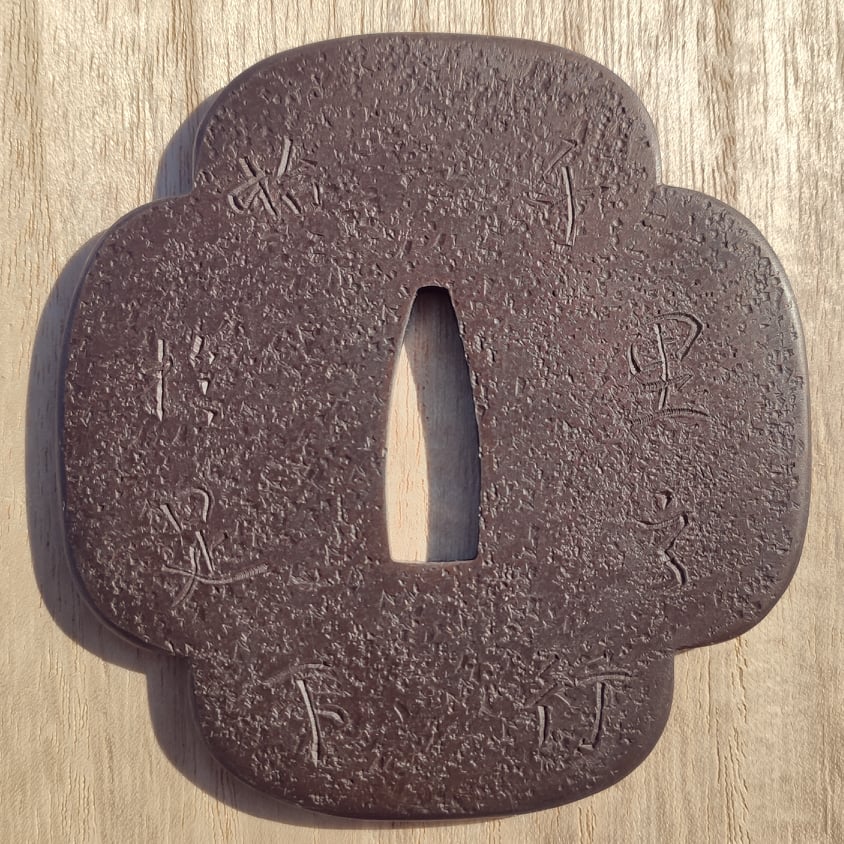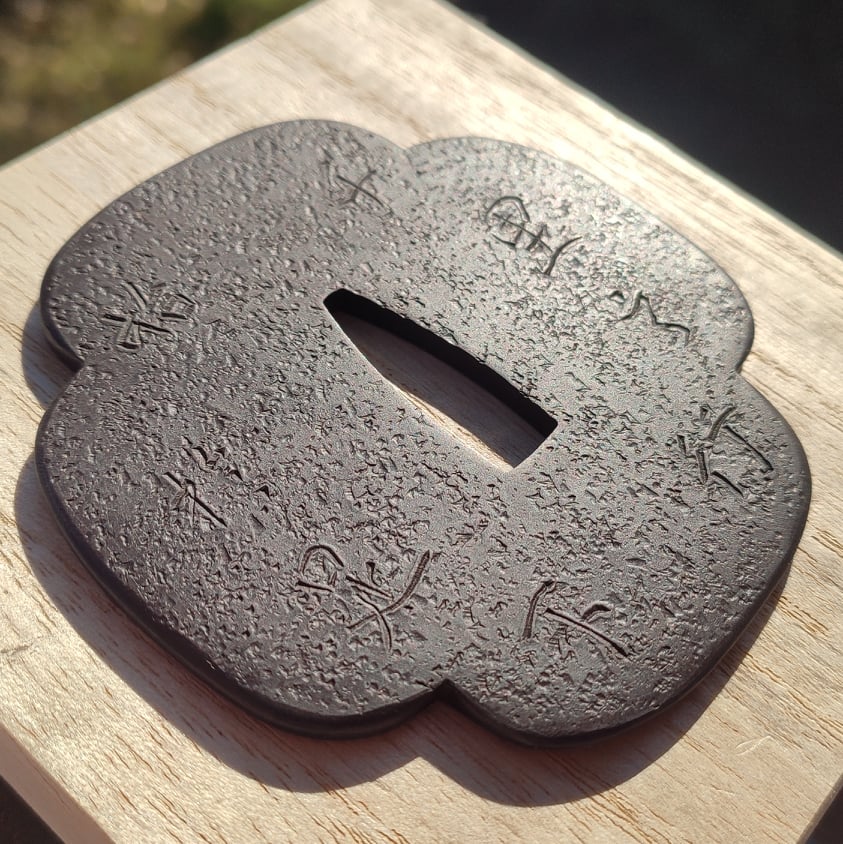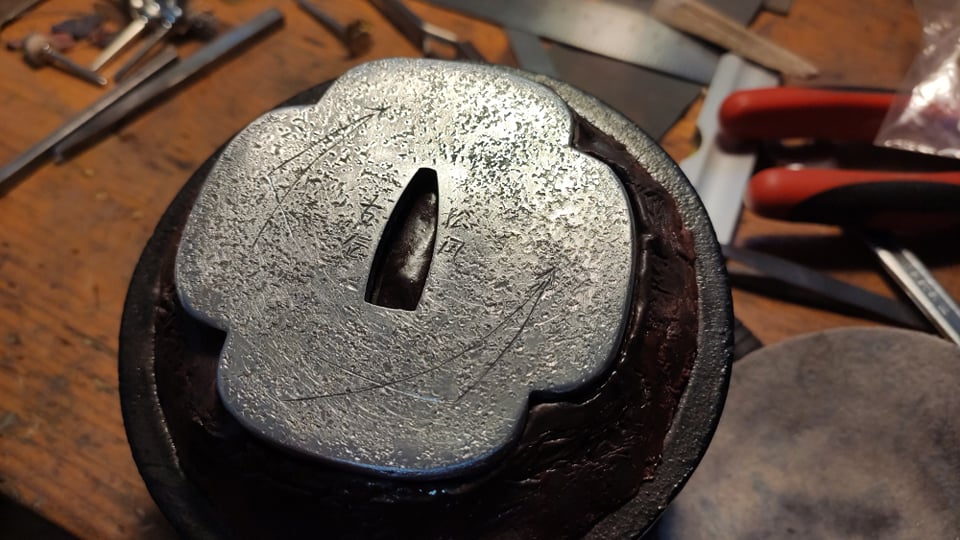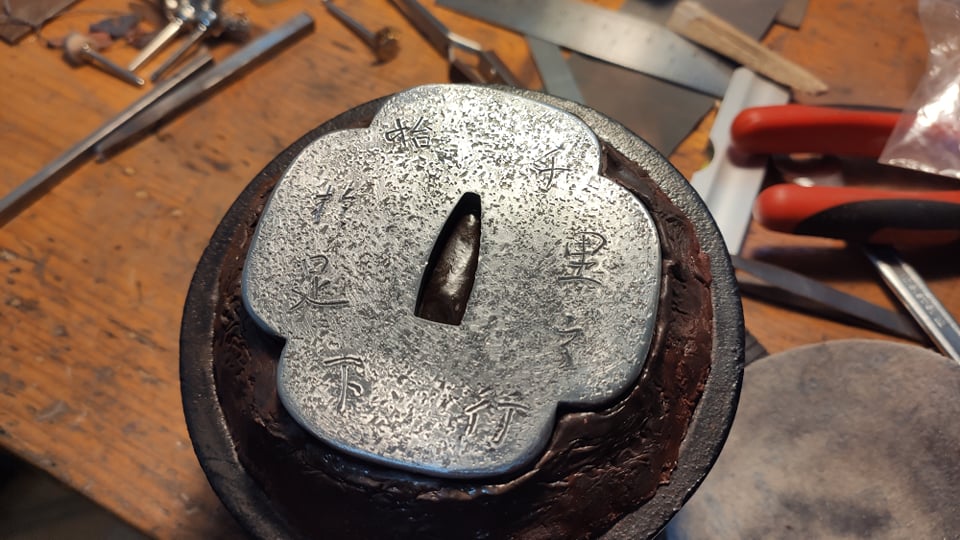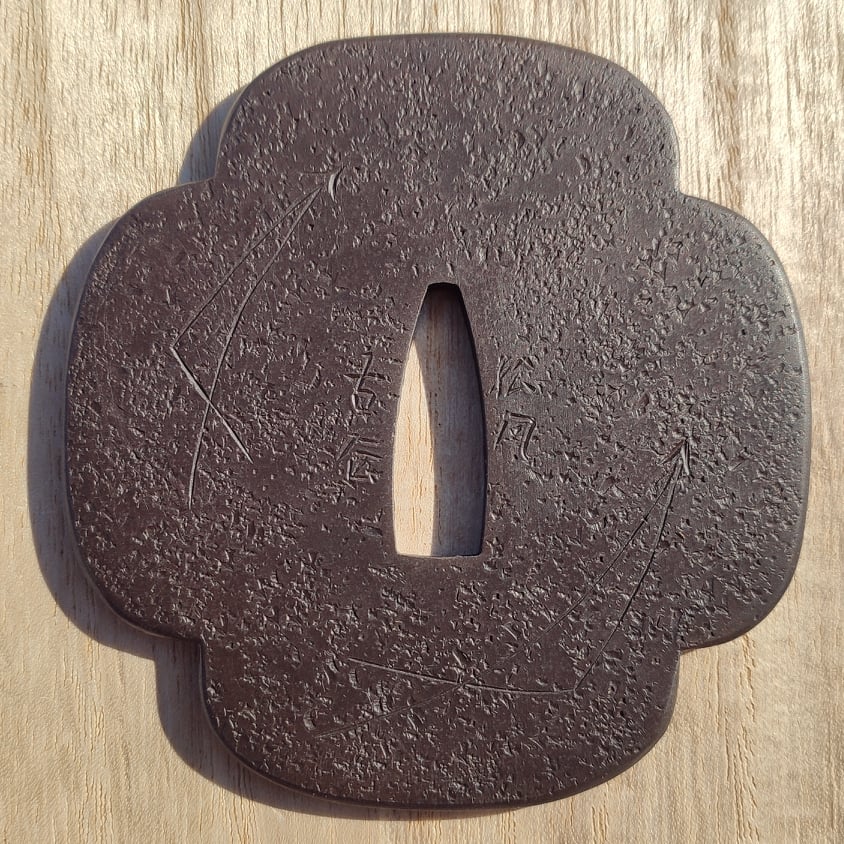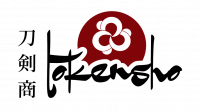Manuel has been working on the Tsuba for the first Matsukaze prototype. It is an iron Mokko-shaped Tsuba with a fine Mimi and bears “千里之行 始於足下” on its Ura side, the old Chinese proverb that means, “a thousand mile journey begins with the first step”. As per the preferences of ancient Samurai, it is written in Chinese rather than Japanese.
This proverb figuratively means, “big accomplishments come from an accumulation of little achievements made one by one”. We chose this for the first prototype of Matsukaze as this is truly our first step towards a big accomplishment.
“Broken Pine Needle”, a motif popular in Japanese culture, poetry and also a central symbol in the Soto-Shu of Zen-Buddhism (my school) is shown on the Omote. Asked about the meaning of the broken pine needle that both clergy and laypeople have sewn on the back of their Rakusu (small Kesa or Kasaya) our Teacher Suzuki-Roshi answered:
“Oh, that is-I don’t think that it-that is just to keep, you know, keep two-two parts tied together. It is pine, you know, pine leaf. That is, you know-in Japan, pine symbolize-pine is-pine tree is-is supposed to be-first of all, it is always green, and pine tree lives long long time, and it doesn’t change its color all year round. So we have some special feeling about pine, and that pine leaf we use in various way, you know, that design. When you make some-some furoshiki,[a square piece of cloth in Japan used for wrapping items such as gifts] you know, we put pine leaves [on them], you know. I think that is why maybe better to ask Yoshida-roshi [laughs]. He may have some reason-she may have some reason, but I think that is more very common, you know, for Japanese in Japanese culture to use pine leaves. You notice, you know, many-we have many pine-tree design or pine-leaves design. We like bamboo also. Bamboo.“
